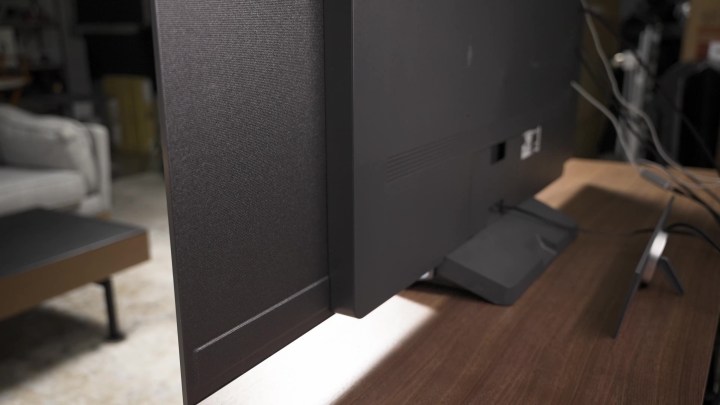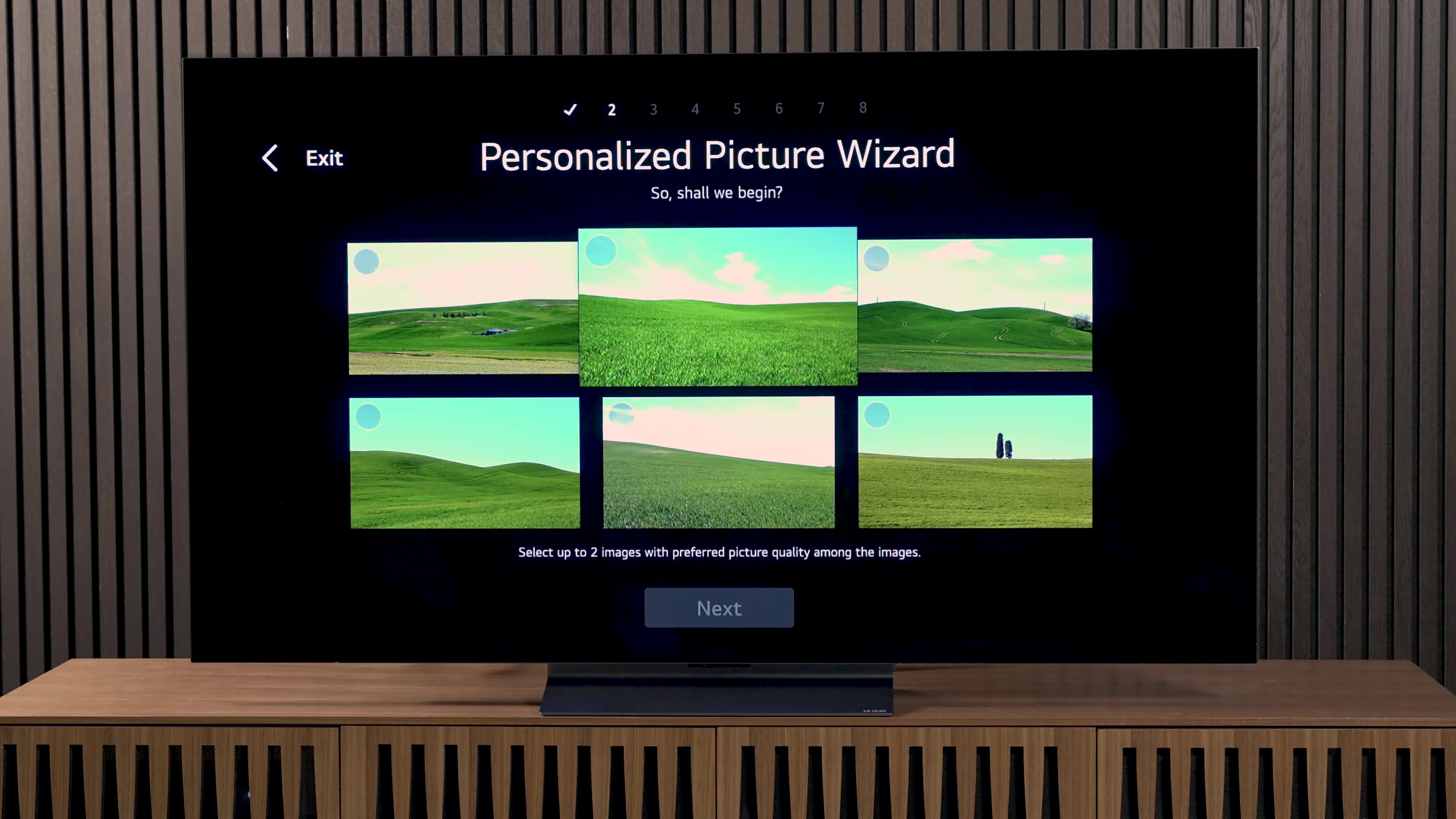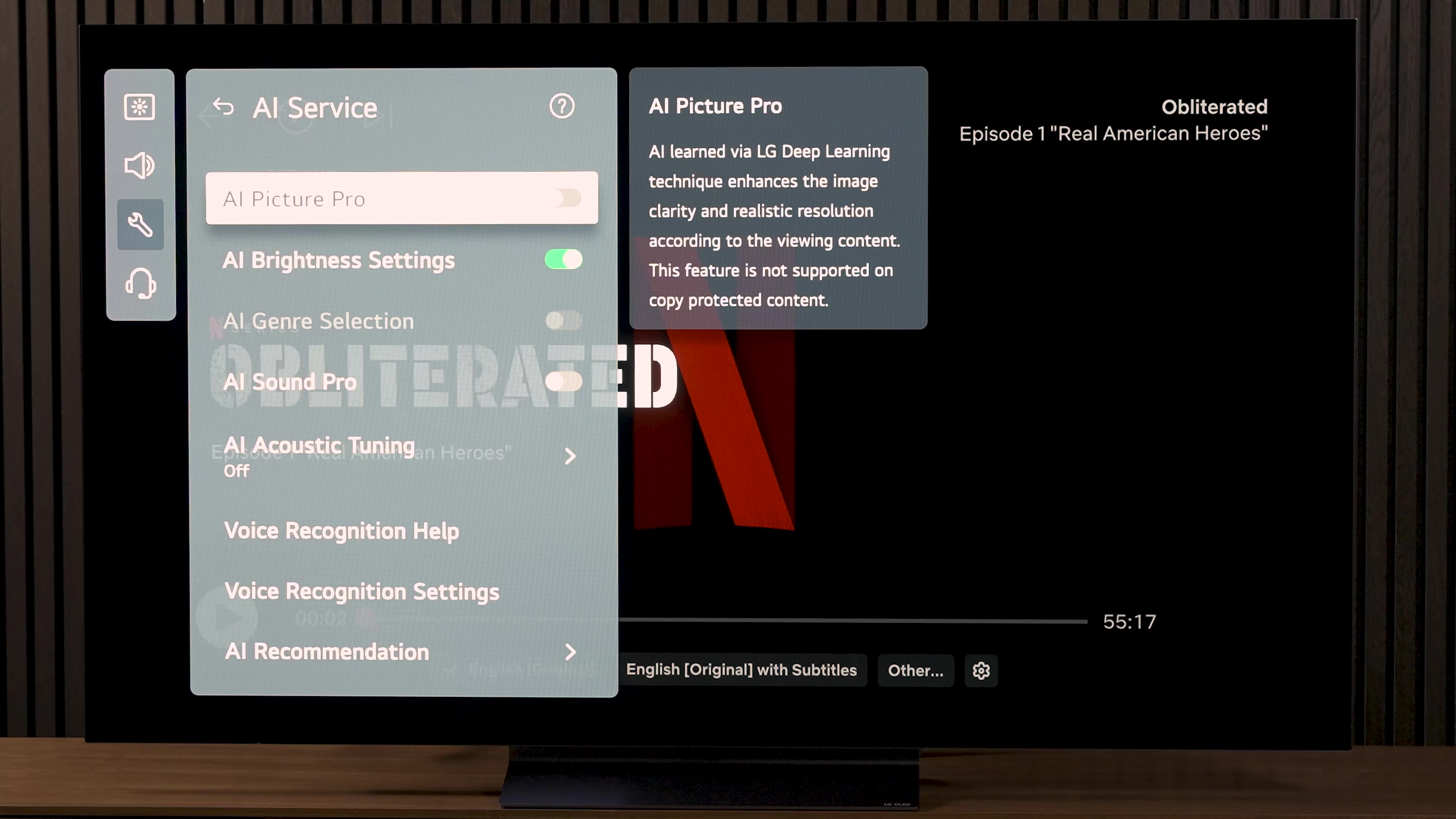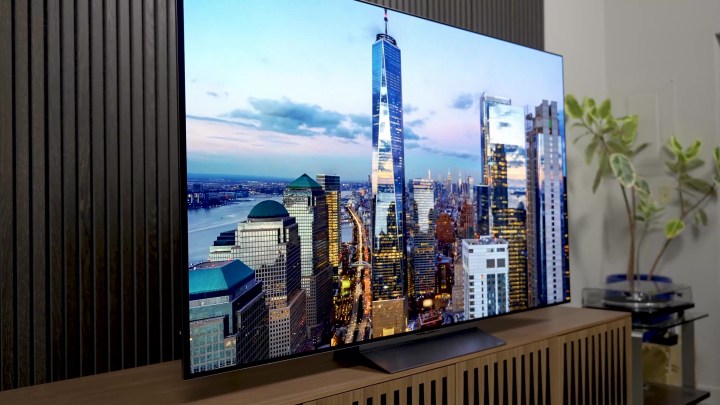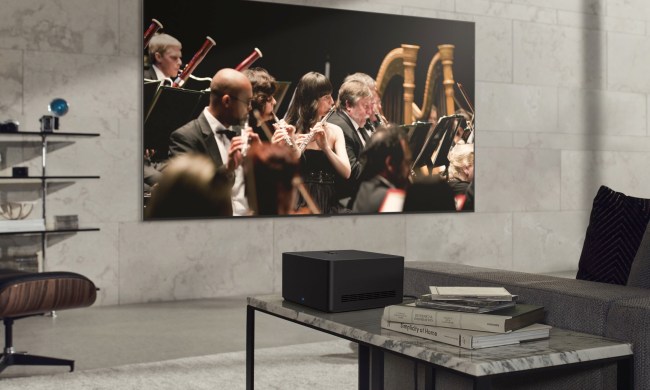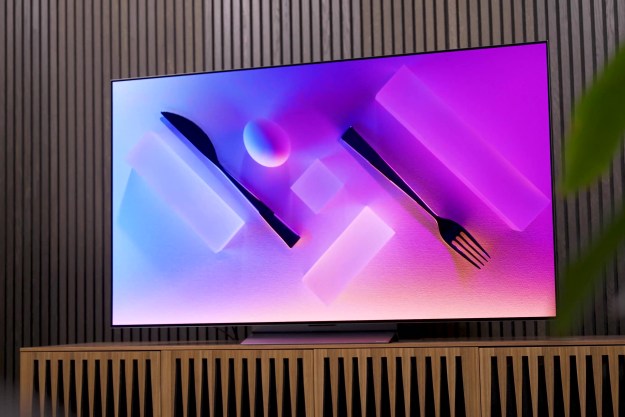
- Delightful contrast
- Excellent color performance
- Very good processing
- Killer gaming features
- Five-year warranty
- Low-level color shift
- Too-frequent updates
LG will soon announce the successor to the TV I’m about to review for you. (That’s the sort of thing it does each January at CES.) I’ve never before reviewed a TV so late in the year. But as it turns out, I think right now is the perfect time to talk about the LG C3 OLED TV.
It has been one heck of a year for TVs. We have spent a lot of time talking about the best OLED TVs you can buy, as well as the best LED TVs you can buy, including the best bang-for-your-buck models on the market.
The LG C3 kind of sits in the middle of all that discussion, with the Sony A80L and the Samsung S90C flanking it.
The LG C3 is a premium TV — definitely among the best seven TVs released in 2023. And as premium TVs go, it’s a more sensible buy than one of the tippy-top-tier OLEDs we talked about in our OLED shootout, which focused on the super-premium Sony A95L, Samsung S95C, and LG’s own G3 gallery series OLED.
The LG C3 offers roughly 93% (that’s an estimate, of course) of the performance of those super-premium, super-expensive TVs, but at a much more approachable price. Again, within the premium TV sphere.
In this review, we’re going to talk about why you should or perhaps should not buy the LG C3. And stick around to the end because we’re going to talk about why the LG C3 is itself a symbol for what LG needs to do in 2024 — specifically with the model that will eventually replace this TV, the C4 OLED.
Video review
Out of the box
The LG C3 delivers a lot of wow factor out of the box. It is designed so that most of the electronics are tucked into a small bump-out toward the lower third of the TV’s backside. This leaves the impossibly thin panel up top, sitting proudly to impress your friends.
Unlike the step-up G3 OLED, which comes with a wall mount in the box, the C3 comes with a tabletop stand. So if you want to mount it, you’ll need to buy a mount separately. Also in the box is LG’s magic motion remote, along with some product literature, and that’s about it.
- 4. LG C3 OLED Speakers
Attaching the TV’s stand is a piece of cake, and while you may be tempted to hoist the thing up onto your media cabinet alone, I urge you to get help because you’re going to spend a fair chunk of change on this thing and, you know, accidents happen.
Setup and operation
In case you weren’t already aware, LG televisions ship with LG’s webOS software running the show. If you’ve never owned a smart TV before, I think you’ll get along with webOS just fine. It’s kind of fun, but it also is also very powerful and loaded with features — too many features, if you ask me. There’s so much stuff here that it can feel overwhelming, especially for someone just transitioning from an older TV.
The setup is a cinch — on-screen prompts walk you right through it. But after that, there’s a lot to discover. And you may find yourself having to approve updates all the time. It seems like every time I open Netflix, there’s an update to install. I am all for having the latest and greatest version of an app or operating system — that’s better than not supporting the TV and letting things get old, outdated, and crusty. And to LG’s credit, these updates are lightning fast. I can’t even get mad about waiting on an update to watch content when the wait is so short. But it’s just so many updates!
When you let LG’s webOS wizard walk you through the process, it will ask you about AI Picture this and AI sound that. Give these a try. But since I’m kind of a purist, I prefer to leave these options disabled. I’ve not had the best luck with the AI sound. It often creates a wash of fake surround sound that I don’t care for, which has the unintended consequence of washing over the dialogue from time to time. And as for AI picture, I don’t personally care for the results most of the time. But that doesn’t mean you won’t love it. So, play with it. You can turn it on and off as you want.
One thing you absolutely need to do, however, is disable the eco settings because if you don’t, you are not getting all the brightness and contrast you paid for. The TV will ship in an auto power-saving mode. You can disable this by selecting any other picture preset. For SDR, I recommend Cinema or Filmmaker mode. In

Then you need to go into Settings > General >and Energy Savings. Here, you can turn this off to unlock the brightness potential of the TV.
While basic get-up-and-running setup is a breeze, I’m still frustrated with how long it takes to get your preferred picture settings implemented across apps and HDMI inputs. There’s an “apply setting to all inputs” option that makes you think your SDR,

Thankfully, you don’t have to make selections for each individual app – for example, once you customize
Getting folks to adjust their picture mode is already difficult enough. Telling them they have to do it 15 times? That’s just no good.
Picture quality
Brightness
Anyway, once I got the C3 all set up and let it run some content for a while, I dove into measuring it. This brings us to a section I like to call “Numbers for Nit Nerds.”
Starting with peak brightness, I maxed out all of the brightness settings for SDR — that means setting the brightness at 100 and peak brightness to high — and I was not at all surprised to measure peak brightness at 400 nits in SDR with a 10% window and 150 nits full screen. In
Color and white balance
SDR color measurements came in looking excellent, but not when I had the brightness settings maxed out. I saw just a couple of color errors up in the Delta E of 8 neighborhood with brightness maxed out. But as soon as I restored Filmmaker mode to its default settings, color measurements were excellent. In

In terms of the two-point white balance, in SDR, it was just about perfect out of the box. In
Motion
Our motion tests showed the LG C3 doing a very admirable job with motion resolution, with just a bit of stutter apparent in 24 frames-per-second (fps) content due to the OLED panel’s instant response time. This is totally normal. I do think that Sony’s deft and lighter-handed motion smoothing for cinematic content is preferable, though, as LG’s Real Cinema setting introduces more soap opera effect than I’m personally willing to tolerate. You may feel differently, though.
Tone mapping appeared excellent using both 1,000-nit and 4,000-nit patterns, with no excessive clipping in the brightest areas. This is a good sign for preserving highlight detail, but we’ll check that momentarily in real-world content.
The LG C3 is a stellar performer — definitely what you should expect from a premium TV.
So, as a recap, by the measurements, the LG C3 is a stellar performer — definitely what you should expect from a premium TV. The good news is that the measurements are an excellent indication of what you’d expect when watching real content.
The LG C3 is an outstanding-looking OLED TV. Its 800 nits peak brightness is more than enough in moderately lit to dark rooms. In fact, if you are putting your TV in a dedicated media room, I think the C3 is a better choice over the brighter micro lens array (MLA)-equipped G3 TV. You don’t need the super-juiced brightness of the G3 if you’re building a media room or home theater.
All of the demo content I viewed looked outstanding. LG’s processing has come a long way in the past few years and is dangerously close to Sony’s processing. Sony will tend to preserve color accuracy over brightness punch, so while the LG C3 may not be as color-accurate as a Sony OLED, it’s got a brighter, punchier vibe, yet it stops short of over-brightening the picture.

Its bright highlight detail preservation was solid, and its shadow detail preservation is stellar, especially compared to LED TVs, where shadow detail is sometimes sacrificed in an effort to get the truly inky blacks that OLED TVs pull off naturally.
This TV is an absolute treat to watch, and I have no problem recommending it to anyone. Hell, this TV replaced the Sony A95L as my daily TV, and I don’t miss that much more expensive Sony QD-OLED nearly as much as I thought I would. I love the LG C3 – it looks amazing. Make no mistake. It does just about everything right. It’s almost a slam dunk.
Almost.
There’s just one big problem. LG has had real competition this year. So, let’s talk about that.
The competition
Let’s look at the pricing of the C3 among its closest competition. Keep in mind the prices are subject to change, especially heading into 2024: The 65-inch C3 model reviewed here comes in at $1,600. The Samsung S90C, which is a QD-OLED TV, also comes in at $1,600. And the Sony A80L, which uses the same panel as the C3, but has Sony’s processing and Google TV built in, comes in at just $100 more at $1,700.
- 1. LG C3 OLED
Two to three years ago, the LG C series stood alone. It was significantly less expensive than the Sony competition, and QD-OLED didn’t exist yet. So it was just a slam dunk choice for anyone wanting an OLED TV, but not needing to go to the absolute top of the line, like the LG G series.
But the LG C series doesn’t stand alone anymore. If you want the best color brightness and color purity, the Samsung S90C delivers that. If you want the most cinematic look with the best motion resolution and slightly better upscaling, that’s what the Sony A80L offers.

I still think the LG C3 is perhaps the best gaming TV you can buy. I trust WRGB OLED TVs a bit more than QD-OLEDs when it comes to long-term burn-in risk, and the fact that LG’s TVs offer four HDMI 2.1 inputs means it will be favored over the Sony A80L by some gamers.
Dollars and sense
What I’m getting at is that I think LG needs to consider dropping the price of the C series. If Samsung and Sony are coming to the market with competitive TVs that have their own advantages at the same price, then for the C series to regain its no-brainer, just-buy-it status, it will to need to undercut the competition on price.
And I feel like LG should be able to do that by now. LG dominated the OLED TV market for almost 10 years. It’s sister company, LG Display, makes the panels, which means that it should be saving a bit on panel cost and have a bit more margin to play around with. LG has also been making these OLED TVs for over 10 years now, and I feel like its efficiency and scalability in terms of production should contribute toward being able to lower the price a bit.

Plus, with much less expensive mini-LED TVs now offering higher brightness and black levels that are dangerously close to OLED, the LG C-series OLEDs need to make a more compelling case.
One thing we should not overlook, though, is LG’s three-year panel warranty. If you’re at all worried about burn-in, don’t be. LG isn’t. If anything goes wrong in five years, you’re covered. As far as I’m aware, that is a best-in-industry warranty
I think LG could make the C4 more compelling if its price comes in a bit lower than the C3 did when it was introduced and if the C4 can come in meaningfully lower than the Sony and Samsung competition. I don’t think the C4 is going to offer MLA – that just wouldn’t make any sense.
But if the C4 does launch at a lower price, then the C3’s price needs to drop even more as the 2024 models roll out. And that could make the C3 the no-brainer purchase I really want it to be.
The LG C3 is a stellar TV, and if you buy one, you will absolutely love it – especially those of you who don’t watch TV with sunlight just drenching your room. The C3 offers the best picture quality you can get at a more reasonable price than brighter, pricier ultra-premium OLEDs.
But if you’re doing your research and weighing your options, you’ll want to consider whether the Sony A80L or the Samsung S90C might be a better fit. That’s just not something I’ve had to say in the years past.




